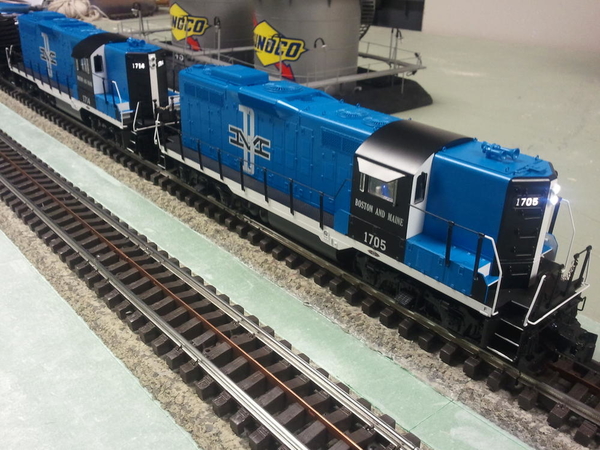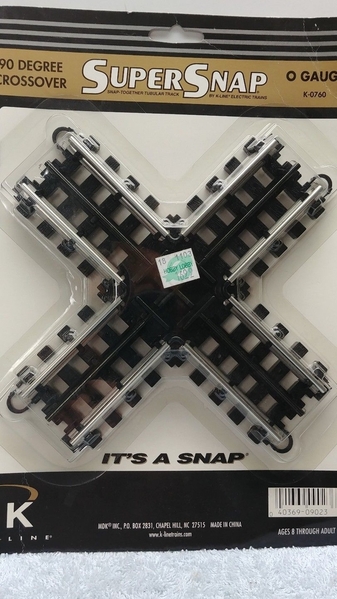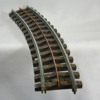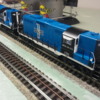I have no groved rollers. Beenvrunning on it since 1967. Arching on dirty track is what groves rollers.
Im in traffic. Cant text. Arcing sparks take a nibble of the rollers witg each spark. Tenders when whistles arc on dirty track.
Copper is much softer than steel...
I have high milage engines with copper on the roller. Ill take pics. O gauge track eats rollers if dirty.
U just cant cut hardend steel with soft copper!
Im driving to lhs to get my naiagra
Ok. Finally home from the lhs with my 6013... i couldnt type and drive so i am behind in response...
This is one of my favorite subjects... roller wear... i really dont care if any of you believe me. I will continue running on super o.
I have had NO ROLLER WEAR on any of my PWC, pw original, MPC, or modern scale engines and have operated on super o extensively.
As a kid, i would run for 1 to 2 hours every day from about 1967 to 1983 on two different super o layouts on conventional voltages. First a 5x9ft and then a 16x32ft... stopping in '83 when i went to college. Then I built my big super o layout and ran about the same amount from about 2003 to 2011 all solidly at full power 18v tmcc&legacy.
I would have train parties where friends engines and my engines would run for hours straight usually starting at 4pm and ending at about 1am to 2am (8 to 9hrs straight). We hosted alot of running parties in those 8 years. Many on this forum will tell you they didnt damage any rollers on their engines running at my house. We always joked about roller wear at the parties. We would have about 8 to 10 parties a year.
From 2013 till now i have a 50ft x 23ft back room super o layout 18v legacy only which i do not run enough, probably only 2 to 3hrs a week.
I have never had any roller pickup notched or warn by the super o track. Keep in mind, steel material rollers are 3 to 4 times harder than the copper material depending on grades, and MECHANICALLY you can roll all day on soft copper and not cut STEEL.
FREE ROLLING Roller wear is from arcing (sparking) of the rollers operating on dirty track. This can happen on any track type if dirty. In my years collecting postwar, i have seen a few rollers clearly notched that matches the exactly the rail head shape and widgh of tubular track. Some kid never cleaned the track and ran alot while pickup rollers and whistle tender rollers sparked away. It is the sparking that pits and cuts the rollers irregardless of track type.
This is dirty super o and i would never run on track looking like this... rails are black with wheel grime and center rail is badly tarnished.
This is clean super o. I simply use 3m abrasive pad and wipe the track after about 2 weeks or so of operation. Clean track top of railhead is shiny. You can also see the shiny glint on the copper. Keep your track clean. Use track cleaning car if you are lazy. I just wipe with scotchbrite abrasive pads (the dark oxide ones). I can post a pic. Its so easy and i can wipe one 275ft loop in about 5min or less.  Even the nastiest super o can easily have shiny railheads and top of center rail with these pads without alot of effort...
Even the nastiest super o can easily have shiny railheads and top of center rail with these pads without alot of effort...
There is no sparking on clean track. So no roller wear. Proof the super o track alone doesnt cut rollers are all my engines and all my friends engines on my track. Infact i can find some rollers that have clear copper residue on rolling surfaces showing the copper is softer than steel and moves from rail to roller.
Cleaning your track is in every manual on model trains... this electrical performance is why.
So thats it. Ripley's.




















